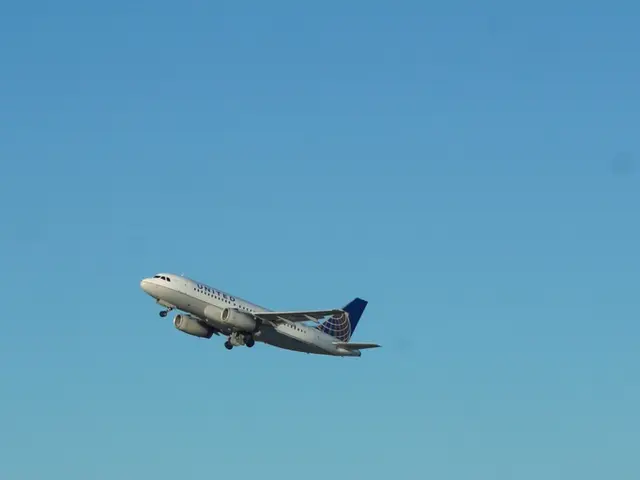Navigational Adjustments for Aviators: A Practical Guide with 10 Key Strategies
Diversions in aviation ain't some fancy dance move. It's when a plane deviates from its originally planned course to another spot due to various reasons. And fear not, boys and girls, even us private pilots can handle it! Here's the lowdown on diverting your aircraft.
What's a Diversion, Anyway?
You know when you're driving, and life throws ya a curveball, asking ya to take a detour? Think of it like that, but with planes. A diversion is navigating to a different destination instead of the originally planned one. Usually due to unforeseen circumstances. It's a skill every private pilot must master.
Best part? Planning a diversion ain't as hard as it seems. With a bit of technique and good airmanship, diverting can actually be safer than sticking with the original flight plan!
Why Divert?
Weather
Oh, the devilish weather. If you're flying VFR, keep your eyes on the sky, my friends. Since it can change during long flights, you might find conditions unsuitable for landing at your planned destination. Wind, visibility, cloud base, rain, windshear, or thunderstorms can make for a bumpy ride!
Airport Closure
Seldom, but still possible - a darn airport closing out of nowhere. You better have a backup plan if that happens and you're already airborne!
Pilot Preference
The joy of flying a light aircraft is its freedom. Sometimes, you might just have a change of heart and decide to alter the flight plan while up in the air.
Airplane Performance
Maybe the ol' jet engine just ain't got what it takes to reach your destination. Being a good pilot means planning ahead and considering factors like fuel consumption, Takeoff Run, and landing capabilities. Stuck there? Plan an en-route diversion!
Diversion for Private Pilots - A How-To Guide
Here's a step-by-step breakdown:
1) Keep the Plane Safe
First things first – ensure safety. Even if the diversion is unplanned, remember the building blocks of piloting: aviate, navigate, and communicate! Don't get so caught up in charting and planning that you compromise the aircraft's safety.
2) Get the Weather at Your Diversion Destination
Find out if your planned diversion location's weather conditions allow for a successful landing. Weather forecasts can be found using services like TAFS, ATC, ATIS, PIREP, or FIS.
3) Plot Your Route
Pick a suitable route to your diversion destination, keeping factors like airspace, terrain, emergency landing sites, navigational aids, and ease of navigation in mind. Make your route simple and try to keep the number of waypoints low.
4) Measure Your Distances
Calculate the distance to your diversion location, using a chart plotter or aviation ruler for accuracy(ish) during slow flight, or the "rule of thumb" for a quicker, rough estimate.
5) Work Out Timings
Gotta know how long your flight'll take. Distance divided by speed, y'all.
6) Make Notes
Keeping a record of essential details like heading, altitude, distance, timings, and fuel consumption will help avoid forgetting important info.
7) Consider Fuel Endurance
Keep an eye on your fuel tank levels and make sure you've got enough to reach your diversion location.
8) Reset Your Heading Indicator
Before setting off on your diversion, ensure your heading indicator is accurately aligned for valid data.
9) Turn, Time, Orientation
Use the HAT-TTO technique (Heading, Altitude, Time, Turn, Time, Orientation) to initiate your diversion.
10) Brief Yourself for the Arrival on the Way
Familiarize yourself with your diversion location while cruising and "self-brief" your arrival and landing preparations.
Top Tips for Private Pilots
- Seems straightforward, but in times of stress, don't neglect the basics – fly the airplane!
- Set off from a known point for easier navigation and situational awareness.
- Start that stopwatch, cowboy! It'll help you track your progress and avoid navigation errors.
- Choose routes with big, easy-to-spot fixes for simplified navigation.
- Quickly draw a wind arrow on your chart to make rough wind correction calculations while on the move.
- Remember variation – your heading indicator reads magnetic, but your map's got true headings. Adjust accordingly!
- Don't hesitate to ask ATC for help if you're lost – remember, they're trained to provide guidance during diversions.
- In doubt, a 180 degree turn will get you back to where you were. Helps figure out where you went wrong and get ya back on track.
- Close that flight plan up, pardner! Inform ATC that you've landed safely, and they won't start an unnecessary search for ya.
- Practice diversions regularly. The more you practice, the better prepped you'll be for the real deal.
A commercial pilot in the aviation industry may also need to diversify their flight plans due to various reasons, such as weather conditions, airport closures, or airplane performance issues that affect fuel consumption, takeoff run, and landing capabilities. A private pilot can also handle diversions, finding it crucial to learn the skill for safety and seamless travel. A diversion for a private pilot typically involves keeping the plane safe, acquiring weather information at the diversion destination, plotting a simple route, calculating distances and timings, record-keeping, and fuel endurance management before initiating the diversion using the HAT-TTO technique. Top tips for private pilots also include practicing diversions regularly, consulting Air Traffic Control (ATC) for guidance, and adjusting navigation due to variable headings.








